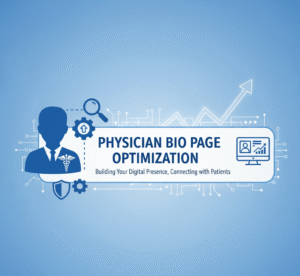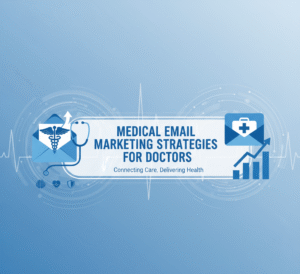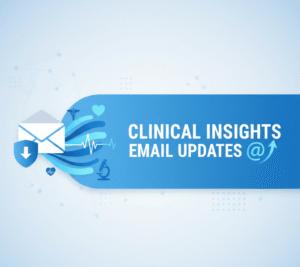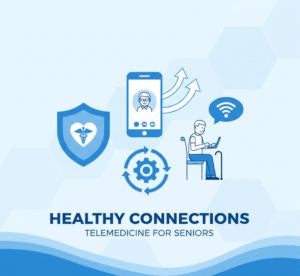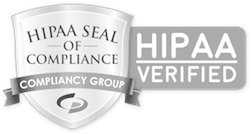“Discover best practices for email campaigns in Obstetrics and Gynecology, covering personalization, automation, and mobile strategies to build stronger patient relationships.”
In today’s dynamic healthcare landscape, effective communication is paramount. Connecting with patients goes beyond in-office visits for Obstetrics and Gynecology (OB-GYN) practices. It extends to building lasting relationships, providing vital information, and fostering a sense of trust and community. This is where email marketing for OB-GYN practices steps in as an indispensable tool. It’s not just about sending out messages; it’s about crafting a digital conversation that informs, engages, and supports your patients through every stage of their health journey.
This comprehensive guide delves into the core strategies for OB-GYN practices aiming to refine patient communication and engagement through powerful email marketing. We’ll explore how to create personalized, informative emails, master the art of compelling subject lines, segment your audience for maximum impact, and leverage marketing automation to streamline your outreach efforts. Furthermore, we’ll emphasize the critical role of integrating mobile and SMS marketing for a truly multi-channel approach, guaranteeing consistent patient engagement. Throughout this exploration, we’ll highlight Invigo Media’s specialized knowledge and how their customized email marketing, automation, and mobile solutions can empower OB-GYN practices to forge stronger patient relationships and expand their reach.
Why Email Marketing is Essential for Your OB-GYN Practice
Before we dive into the “how,” let’s understand the “why.” In an era dominated by digital interactions, email remains a direct and highly effective channel for reaching your audience. For OB-GYN practices, this translates into several significant advantages:
- Direct Patient Communication: Email allows you to bypass the noise of social media algorithms and reach your patients directly in their inbox. This is a personal space, and when used respectfully, it fosters a sense of direct connection.
- Building Patient Relationships: Regular, valuable communication builds trust and rapport. Patients appreciate feeling informed and cared for; email provides a consistent way to do this.
- Sharing Vital Information: Email is an efficient way to disseminate crucial information, from appointment reminders to health tips, new services, or important updates.
- Educating and Empowering Patients: You can use email to inform patients about various women’s health topics, preventative care, and treatment options, empowering them to make informed decisions about their health.
- Cost-Effective Marketing: Unlike traditional advertising methods, email marketing offers a high return on investment and is an affordable way to reach many people.
- Driving Appointments and Retention: Well-executed email campaigns can remind patients about annual check-ups, encourage them to schedule appointments, and foster loyalty, leading to higher patient retention rates.
- Measuring Success: Email marketing platforms provide detailed analytics, allowing you to track open rates, click-through rates, and conversions. This data is invaluable for refining strategies and understanding what resonates with your audience.
Email marketing is not just a promotional tool; it’s a cornerstone of modern patient care and practice growth for OB-GYN professionals.
Crafting Personalized, Informative Emails: The Foundation of Success
Creating personal and highly informative content is the cornerstone of any successful email marketing strategy for OB-GYN practices. Generic, mass emails often end up in the spam folder or, worse, are ignored. Your patients seek relevant information that speaks to their unique needs and concerns.
Know Your Audience: The Key to Personalization
Before you even begin writing, take the time to understand your patient base. Consider their demographics, common health concerns, life stages (e.g., expecting mothers, menopausal women, young adults), and primary reasons for visiting your practice. This understanding is the bedrock of effective personalization.
- Demographics: Age, location, and family status can influence the type of content that resonates.
- Life Stages: The information a pregnant woman needs vastly differs from that relevant to a post-menopausal woman. Tailor your content accordingly.
- Common Concerns: Are many of your patients asking about fertility options? Or preventative screenings? Address these frequently asked questions in your emails.
Content That Connects and Informs
Once you understand your audience, you can create email content that genuinely connects with them. Here are some ideas for informative and engaging content:
- Health Tips and Preventative Care: Share actionable advice on maintaining women’s health. This could include tips on nutrition, exercise, stress management, or specific health screenings. For instance, an email could discuss the importance of regular mammograms or provide information on managing PCOS symptoms.
- Service Spotlights: Gently introduce new services or highlight existing ones. Explain their benefits clearly and concisely if you offer advanced prenatal diagnostics or specialized gynecological procedures.
- Patient Education Series: Break down complex medical topics into easily digestible segments. A series on managing menopause symptoms, for example, could be incredibly valuable to a specific segment of your patient base.
- Answers to FAQs: Address common questions your patients have. This demonstrates that you understand their concerns and are proactive in providing solutions.
- Practice News and Updates: Inform patients about new doctors joining the practice, expanded hours, or any changes affecting their appointments or visits.
- Seasonal Health Reminders: Send out timely reminders about flu shots, seasonal allergies, or tips for maintaining health during different times of the year.
- Patient Testimonials (with consent): Sharing positive patient experiences can build trust and reassure potential patients.
- Links to Your Blog or Website: Encourage patients to visit your website for more in-depth information and resources or to schedule appointments online.
The Art of Personalization Beyond Just a Name
Personalization goes beyond simply inserting a patient’s first name into the subject line. True personalization means delivering content relevant to their needs and past interactions with your practice.
- Segmented Content: We’ll discuss segmentation in more detail later, but this means creating content by sending different emails to different groups. For example, an email sent to a new patient in a welcome series will differ from an email sent to a patient due for their annual check-up.
- Behavior-Triggered Emails: If a patient visits a specific page on your website (e.g., fertility services), you could automatically email them with more information.
- Appointment-Related Communications: Beyond simple reminders, these emails can include pre-appointment instructions, what to expect during their visit, or post-appointment follow-up information.
Tone and Language: Human and Empathetic
Remember, you are communicating about sensitive health topics. The tone of your emails should be:
- Empathetic: Show understanding and compassion.
- Professional: Maintain a high level of medical professionalism.
- Accessible: Avoid jargon where possible. If medical terms are necessary, explain them clearly.
- Reassuring: Help patients feel comfortable and confident in your care.
By focusing on personalized, informative content delivered with an empathetic and professional tone, your OB-GYN practice can transform its email campaigns into a powerful tool for patient engagement and education. This approach builds trust and demonstrates your commitment to comprehensive patient care.
Optimizing Subject Lines: Your Gateway to the Inbox
The subject line is the first impression your email makes. In a crowded inbox, it’s often deciding between an email being opened or sent to the trash. For OB-GYN practices, crafting compelling subject lines is crucial for ensuring your valuable information reaches your patients. A good subject line is clear, concise, and sparks curiosity or provides immediate value.
Principles of Effective Subject Lines
- Be Clear and Concise: Get straight to the point. Readers should understand the email’s purpose at a glance. Long, rambling subject lines get cut off on mobile devices.
- Create Urgency (Sparingly): Use words that imply timely action, but only when appropriate. For example, “Reminder: Your Annual Check-up is Due Soon.” Avoid false urgency.
- Offer Value: What’s in it for the reader? Highlight a benefit or a solution to a problem. “Tips for a Healthy Pregnancy” is more appealing than “Newsletter.”
- Personalize When Possible: As mentioned, including the recipient’s first name can increase open rates. “Sarah, Important Health Update from Your OB-GYN” feels more direct.
- Evoke Curiosity (Carefully): Pique interest without being misleading. “Is This Common OB-GYN Myth Affecting You?” might encourage an open discussion.
- Avoid Spam Triggers: Steer clear of excessive capitalization, exclamation points, and words commonly associated with spam (e.g., “free,” “win,” “guarantee”). Email providers are highly sensitive to these.
- Test and Learn: What works for one audience might not work for another. A/B test different subject lines to see which ones perform best.
Examples of Effective Subject Lines for OB-GYN Practices
Here are some examples tailored to an OB-GYN practice, categorized by their purpose:
Appointment Reminders/Scheduling:
- “Reminder: Your Annual Check-up is Coming Up”
- “It’s Time for Your Annual Well-Woman Visit”
- “Schedule Your Next Appointment with [Practice Name]”
- “Don’t Miss Your Upcoming Appointment on [Date]”
- “Important: Confirm Your Appointment on [Date]”
Health Information/Education:
- “Key Steps for a Healthy Pregnancy”
- “Understanding Menopause: What You Need to Know”
- “Protect Your Health: Cervical Cancer Screening Info”
- “Managing PCOS Symptoms: A Comprehensive Guide”
- “Questions About Fertility? We Have Answers.”
- “Tips for Staying Healthy During Summer”
- “The Truth About [Common OB-GYN Myth]”
Practice Updates/News:
- “Exciting News: New Services at [Practice Name]”
- “Meet Our New OB-GYN Specialist!”
- “Expanded Hours for Your Convenience”
- “[Practice Name] Updates: What’s New?”
- “We’ve Moved! Find Our New Location Details”
Promotional (for specific services, used judiciously):
- “Explore Our Advanced Prenatal Care Options”
- “Discover the Benefits of [Specific Procedure/Service]”
- “Special Offer: [Brief Description of Offer, e.g., ‘Free Consultation for Fertility Services’]”
Re-engagement/Nurturing:
- “We Miss You! Time for Your Annual Check-up?”
- “A Quick Check-in from Your OB-GYN Team”
- “Important Health Reminders from [Practice Name]”
Tips for Optimizing Your Subject Lines
- Keep it Short: Aim for 40-50 characters, or about 5-7 words, for optimal visibility on mobile devices.
- Use Emojis (Thoughtfully): A relevant emoji can sometimes grab attention and add a friendly touch. Use them sparingly and only if appropriate for your practice’s brand—for example, a heart or a calendar emoji.
- Preheader Text Matters: The preheader text (the snippet of text that appears after the subject line in the inbox) is a valuable extension of your subject line. Use it to provide more detail or entice the reader further. For instance, the subject was “Key Steps for a Healthy Pregnancy.” Preheader: “Learn about nutrition, exercise, and what to expect during your journey.”
- A/B Testing is Your Friend: Don’t guess what works. Set up A/B tests where you send two versions of an email with different subject lines to a small segment of your audience. The one with the better open rate wins, and you then send that winner to the rest of your list. This iterative process refines your approach over time.
- Review Competitors (for inspiration, not copying): See what other healthcare providers or businesses in different sectors do with their subject lines. What catches your eye? What makes you want to open?
- Segment-Specific Subject Lines: As with content, subject lines should be tailored to the segment. For example, an email to new mothers will have a different subject line than one for women approaching menopause.
By dedicating time and thought to optimizing your subject lines, you significantly increase the chances of your essential messages being seen and opened. This direct pathway into your patients’ inboxes is a powerful asset for any OB-GYN practice.
Segmenting Audiences: Sending the Right Message to the Right Person
One of the most powerful strategies in email marketing for OB-GYN practices is audience segmentation. This involves dividing your patient list into smaller, more specific groups based on shared characteristics, behaviors, or preferences. Why is this so crucial? Because it allows you to send highly targeted, relevant emails that resonate much more deeply than a generic, one-size-fits-all message. Think about it: a message about prenatal care doesn’t apply to a post-menopausal woman, and vice versa.
Why Segmentation is a Game-Changer for OB-GYN Practices
- Increased Relevance: Patients receive content that directly pertains to their health journey, making your emails more valuable.
- Higher Engagement Rates: Relevant content leads to higher open rates, click-through rates, and ultimately, better engagement.
- Improved Patient Satisfaction: Patients feel understood and cared for when they receive personalized communication.
- Reduced Unsubscribe Rates: Irrelevant emails are a primary reason for unsubscribes. Segmentation minimizes this.
- Stronger Patient Relationships: When consistently providing valuable, tailored information, you build trust and solidify the patient-provider relationship.
- Better ROI: More effective campaigns mean a greater return on your email marketing investment.
Key Ways to Segment Your OB-GYN Patient List
Here are some practical ways OB-GYN practices can segment their email lists:
- Life Stage/Age Group: This is perhaps the most fundamental segmentation for an OB-GYN practice.
- Adolescents/Young Adults: Focus on first gynecological visits, HPV vaccination, sexual health education, and menstrual health.
- Reproductive Age (Pre-Pregnancy/Fertility): Information on fertility, family planning, preconception care, and general well-woman exams.
- Pregnant Patients: Week-by-week pregnancy updates, prenatal care information, birthing classes, postpartum care.
- Postpartum Patients: Postpartum recovery, breastfeeding support, contraception after birth, well-baby check-ups.
- Perimenopausal/Menopausal Patients: Symptom management, hormone therapy, bone health, cardiovascular health.
- Post-Menopausal Patients: Bone density screenings, heart health, general health, and wellness.
- Medical Conditions/Health Concerns: Patients with specific conditions can receive targeted information.
- PCOS Patients: Management strategies, lifestyle tips, fertility considerations.
- Endometriosis Patients: Treatment options, pain management, support resources.
- Patients with specific chronic conditions: Relevant health advice about their diagnosis.
- Appointment History:
- New Patients: Welcome series, information about the practice, and what to expect.
- Existing Patients (due for annual check-up): Reminders to schedule their annual well-woman exam.
- Patients with specific procedure history: Follow-up care, information about subsequent steps.
- Patients who haven’t visited in a while: Re-engagement campaigns.
- Service Interests: Based on the services they’ve inquired about or received.
- Fertility Services: Information on IVF, IUI, egg freezing, etc.
- Cosmetic Gynecology: Information on relevant procedures.
- Pelvic Floor Therapy: Details about this specialized care.
- Communication Preferences:
- Preferred contact method: Email vs. SMS.
- Frequency of communication: Some patients prefer emails that are less frequent.
- Language preference: If your practice serves a multilingual community.
How to Implement Segmentation
- Collect Data: Your patient management system (PMS) is a rich data source. Information like age, reasons for visit, and primary health concerns is collected when patients register. Update this information during appointments.
- Use Your Email Marketing Platform: Reputable platforms have robust segmentation capabilities. You can create custom fields and tags to categorize your patients.
- Automate Where Possible: Many platforms allow you to set up rules for automatic segmentation. For example, if a patient schedules a pregnancy consultation, they can automatically be added to your “Pregnant Patients” segment.
- Regularly Review and Refine: As your patient base evolves and new services are introduced, review your segments to ensure they remain relevant and practical. Remove inactive subscribers to maintain a healthy list.
Examples of Segmented Email Campaigns
- Welcome Series for New Patients:
- Email 1: Welcome message, introduction to the practice, and what to expect.
- Email 2: Overview of services offered, how to schedule appointments.
- Email 3: Links to educational resources on your website.
- Pregnancy Journey Series:
- Week 8: “Your First Trimester: What to Expect”
- Week 20: “Mid-Pregnancy Check-in: Nutrition & Exercise Tips”
- Week 36: “Getting Ready for Labor: What to Pack & Signs to Watch For”
- Post-delivery: “Postpartum Care: Recovery & Support”
- Annual Check-up Reminder:
- Email 1 (2 months out): “It’s Time to Schedule Your Annual Well-Woman Visit”
- Email 2 (1 month out): “Gentle Reminder: Your Annual Check-up is Approaching”
- Email 3 (2 weeks out): “Last Chance to Schedule Your Annual Exam Before [Date]”
By thoughtfully segmenting your audience, your OB-GYN practice can move beyond generic outreach and deliver truly personalized, impactful communication. This precision fosters deeper patient relationships and strengthens your practice’s presence.
Using Marketing Automation to Streamline Outreach
Marketing automation is a game-changer for OB-GYN practices. It allows you to automate repetitive tasks, send timely and personalized communications, and nurture patient relationships without constant manual intervention. Imagine a system automatically sending a welcome series to new patients, reminding others about their annual check-ups, or providing educational content based on their health journey. This is the power of automation.
What is Marketing Automation?
Marketing automation refers to software platforms and technologies that automate marketing activities. It’s about setting up predefined workflows and triggers that send messages or perform actions based on specific conditions or patient behaviors. This translates into a more efficient, consistent, and personalized communication strategy for an OB-GYN practice.
Benefits of Marketing Automation for OB-GYN Practices
- Efficiency and Time Savings: Automate routine tasks like appointment reminders, welcome emails, and follow-ups, freeing your staff to focus on patient care.
- Consistency in Communication: Ensure patients receive timely and consistent messages without human error or oversight.
- Enhanced Personalization at Scale: Even with a large patient base, deliver highly relevant content to individual patients based on their data and behavior.
- Improved Patient Engagement: Timely and personalized messages keep patients engaged and valued.
- Better Patient Experience: Streamlined communication contributes to a smoother and more positive patient journey.
- Reduced No-Shows: Automated appointment reminders significantly decrease the number of missed appointments.
- Increased Patient Retention: Consistent communication and value-driven content foster loyalty.
- Data-Driven Insights: Automation platforms provide valuable data on email performance, allowing you to optimize your strategies.
Key Automation Workflows for OB-GYN Practices
Here are essential automation workflows that can significantly benefit your practice:
New Patient Welcome Series:
- Trigger: A new patient registers or has their first appointment.
- Workflow:
- Email 1 (Immediately): Welcome to the practice, introduce your mission and values, and link to the patient portal.
- Email 2 (3 days later): Overview of key services, link to FAQ page.
- Email 3 (7 days later): Invite to follow social media, provide links to educational resources on your website.
Annual Check-up Reminders:
- Trigger: The Patient’s last yearly exam was 11 months ago.
- Workflow:
- Email 1 (1 month before due date): Gentle reminder to schedule their annual well-woman exam.
- Email 2 (2 weeks before the due date if no appointment is made): Follow-up reminder, possibly with a direct link to online scheduling.
- Email 3 (Week of due date if no appointment made): Final reminder before overdue, emphasizing importance.
Appointment Reminders and Confirmations:
- Trigger: Appointment scheduled.
- Workflow:
- Email 1 (immediately after scheduling): This is an appointment confirmation with the date, time, location, and what to bring.
- Email 2 (2-3 days before appointment): This is a reminder email with pre-appointment instructions (e.g., fasting, paperwork), and a link to online check-in.
- SMS Reminder (1 day before): Brief reminder and confirmation request.
Post-Appointment Follow-up:
- Trigger: Appointment completed.
- Workflow:
- Email 1 (1 day after appointment): Thank you for your visit, summary of next steps (if applicable), opportunity to ask questions, link to patient portal for lab results.
- Email 2 (7 days later): Request for feedback (survey link), invite to leave a review (if appropriate and compliant).
Patient Re-engagement Campaigns:
- Trigger: Patient hasn’t had an appointment in 18-24 months.
- Workflow:
- Email 1: “We Miss You! Time for a Check-up?” reminding them of the importance of regular care.
- Email 2: Highlight new services or educational content that might be relevant.
- Email 3: Offer a direct link to schedule or a contact number.
Educational Series (Segment-Based):
- Trigger: Patient added to a specific segment (e.g., pregnant, fertility interest, menopause).
- Workflow: A series of emails delivering relevant information over weeks or months, based on the patient’s stage or condition. For instance, a “Pregnancy Journey” series delivers weekly pertinent updates on the patient’s gestational age.
Birthday Greetings:
- Trigger: Patient’s birthday.
- Workflow: A personalized birthday greeting (no medical content needed, just a friendly touch).
Implementing Marketing Automation
To successfully implement marketing automation, you’ll need:
- A Robust Email Marketing Platform: Choose a platform that offers automation features, segmentation, and integration capabilities (ideally with your PMS). Invigo Media specializes in providing such tailored solutions for healthcare practices.
- Clean Data: Accurate and up-to-date patient data is essential for effective automation and personalization.
- Defined Workflows: Map out each automated sequence’s triggers, conditions, and actions.
- Quality Content: Even automated emails need well-written, informative, and engaging content.
- Testing: Thoroughly test all your automated workflows to ensure they function as intended.
- Monitoring and Optimization: Regularly review the performance of your automated campaigns and make adjustments based on the data.
Marketing automation transforms your email marketing from a manual chore into a powerful, always-on communication engine. It allows your OB-GYN practice to deliver highly relevant, timely messages that build stronger patient relationships and support practice growth while optimizing your team’s valuable time.
Integrating Mobile and SMS Marketing for a Multi-Channel Approach
In today’s mobile-first world, your email marketing strategy for an OB-GYN practice cannot exist in a vacuum. Patients expect information to be accessible and delivered through their preferred channels, and often, that channel is their mobile phone. Integrating mobile and SMS (Short Message Service) marketing into your communication strategy creates a robust, multi-channel approach that ensures consistent patient engagement and improved accessibility.
Why Mobile and SMS are Crucial for OB-GYN Practices
- Ubiquity of Mobile Devices: Almost everyone carries a smartphone, making mobile a direct and immediate channel for reaching patients.
- High Open Rates for SMS: SMS messages boast incredibly high open rates, often exceeding 90% within minutes of delivery. This makes them ideal for urgent or time-sensitive communications.
- Immediacy: SMS provides instant delivery and is vital for appointment reminders, urgent announcements, or quick updates.
- Patient Preference: Many patients, especially younger demographics, prefer text-based communication for quick interactions.
- Accessibility: SMS is accessible even on basic mobile phones, ensuring reach to a broader demographic.
- Complements Email: SMS can powerfully complement your email campaigns, reinforcing messages or serving as a primary channel for brief, critical information.
Best Practices for Mobile-Optimized Emails
Even if you’re focusing on SMS, your emails must be perfectly readable on mobile devices.
- Responsive Design: Your email templates must be built using responsive design, meaning they automatically adjust to fit the screen size of the device they view (smartphone, tablet, desktop). Most modern email marketing platforms offer responsive templates as standard.
- Single-Column Layout: A single-column layout works best on mobile, making it easy to scroll and read without horizontal scrolling.
- Concise Content: Mobile users typically scan. Keep paragraphs short, use bullet points, and get to the point quickly.
- Clear Call-to-Actions (CTAs): Make your buttons large enough to be easily tapped with a thumb. Use clear, action-oriented text (e.g., “Schedule Now,” “Call Us,” “View Lab Results”).
- Large, Readable Fonts: Choose font sizes that are comfortable to read on a small screen without zooming in.
- Optimized Images: Compress images to ensure fast loading times. Large image files can deter mobile users.
- Preheader Text: As mentioned before, optimize your text as it’s evident on mobile.
Leveraging SMS Marketing for OB-GYN Practices
SMS is best used for short, urgent, or highly time-sensitive communications. It’s not a replacement for comprehensive emails but rather a powerful addition.
Ideal Uses for SMS in OB-GYN:
- Appointment Reminders: This is the most common and practical use. “Reminder: Your appointment with [Dr. The name is tomorrow at [Time]. Reply Y to confirm, N to cancel.”
- Appointment Confirmations: “Your appointment with [Dr. Name] n [Date] at [Time] is confirmed.”
- Urgent Announcements: “Due to unforeseen circumstances, our office will close early today at [Time].”
- Lab Result Notifications: “Your lab results are ready. Please log into your patient portal to view: [Link].” (Always ensure HIPAA compliance for sensitive information).
- Prescription Ready Notifications: “Your prescription is ready for pickup at [Pharmacy Name/Location].”
- Quick Follow-ups: “How are you feeling after your procedure today? Please call if you have concerns.”
- Emergency Office Closures: “Office closed today due to weather. We will contact you to reschedule.”
- Waitlist Notifications: “An earlier appointment is available today at [Time]. Reply YES to take it.”
Best Practices for SMS Campaigns:
- Obtain Explicit Consent (Opt-in): This is paramount for HIPAA compliance and general marketing ethics. Patients must explicitly agree to receive SMS messages from your practice. Clearly state what types of messages they will receive.
- Keep it Concise: SMS messages are short (typically 160 characters per segment). Get straight to the point.
- Provide Value: Every SMS should offer clear value to the recipient.
- Identify Your Practice: Always include your practice name (or a recognizable short code) so recipients know who is texting them.
- Include a Call to Action (if applicable): “Call us at [Phone Number]” or “Visit our website: [Link].”
- Offer an Opt-Out Option: This is crucial for compliance. Include “Reply STOP to unsubscribe” in your first message and periodically.
- Time Your Messages Appropriately: Send messages during reasonable hours. Avoid late-night or very early morning texts unless it’s a true emergency.
- Ensure HIPAA Compliance: Be extremely cautious about sending Protected Health Information (PHI) via SMS. Most PHI should be accessed through a secure patient portal, with SMS as a notification. Discuss with your legal counsel.
- Integrate with Your Systems: Your SMS platform should integrate with your practice management system to automate messages based on appointments or patient status.
The Synergy of Email and SMS
Using email and SMS in conjunction creates a powerful, integrated communication system:
- Email for Detailed Information: Use email for newsletters, educational content, detailed service explanations, and non-urgent announcements.
- SMS for Urgent/Brief Notifications: Use SMS for immediate reminders, critical updates, and quick confirmations.
- Reinforcement: Send an email reminder about an upcoming annual visit and follow up with an SMS reminder a few days before.
- Choice for Patients: Allow patients to choose their preferred method of communication for certain types of messages.
Your OB-GYN practice can build a comprehensive and highly effective communication network by integrating mobile-optimized emails and strategic SMS campaigns. This multi-channel approach ensures that your patients receive the correct information, at the right time, on the proper device, fostering stronger relationships and supporting their overall health journey.
Invigo Media’s Expertise: Your Partner in OB-GYN Marketing
Navigating the complexities of digital marketing, especially within the regulated healthcare industry, can be a daunting task for OB-GYN practices. While email marketing, automation, and mobile integration principles are clear, their practical implementation requires specialized knowledge and experience. This is precisely where Invigo Media steps in as a dedicated partner, offering tailored solutions that directly address the unique needs of OB-GYN practices.
Why Choose Invigo Media for Your OB-GYN Practice?
Invigo Media isn’t just a general marketing agency; they deeply understand the healthcare sector, particularly Obstetrics and Gynecology. This specialized focus translates into strategies that are effective and compliant with industry regulations, especially HIPAA.
Here’s how Invigo Media’s expertise can transform your practice’s communication and growth:
Tailored Email Marketing Strategies:
- Custom Content Creation: Invigo Media understands the nuances of women’s health. They can help you craft personalized, informative, and empathetic email content that resonates with your diverse patient segments. This means developing content around prenatal care, fertility, menopause management, preventative screenings, and more while maintaining a professional and reassuring tone.
- Segmented Campaign Development: They work with you to identify key patient segments within your practice and develop specific email campaigns for each. This ensures that every message is highly relevant, increasing engagement and patient satisfaction.
- Compelling Subject Line Optimization: Invigo Media’s team has a proven track record in crafting subject lines that break through the inbox clutter, leading to higher open rates and ensuring your valuable content gets seen. They leverage data-driven insights to refine these crucial elements continually.
- High-Performing Email Templates: They design and implement visually appealing and mobile-responsive email templates that reflect your practice’s brand, ensuring a professional and engaging patient experience across all devices.
Sophisticated Automation Implementation:
- Workflow Design and Setup: Invigo Media helps you map out and implement robust automation workflows specific to an OB-GYN practice. These include a new patient welcome series, annual check-up reminders, post-appointment follow-ups, re-engagement campaigns, and educational content drip series.
- Integration with Practice Management Systems: They understand the importance of seamless integration. Invigo Media can help connect your email marketing platform with your existing practice management system, allowing for automated triggers based on patient appointments, demographics, and other relevant data, ensuring data accuracy and efficiency.
- Strategic Automation for Patient Journey: They don’t just automate tasks; they automate the patient journey. This means setting up sequences that guide patients through different life stages, provide support during sensitive times (like pregnancy), and gently remind them about essential preventative care.
Seamless Mobile and SMS Solutions:
- Strategic SMS Integration: Invigo Media guides you on the best practices for incorporating SMS into your communication strategy. They help you determine which messages are best suited for SMS (e.g., urgent reminders) and how to craft them for maximum impact and compliance.
- Consent Management: They prioritize compliance. Invigo Media assists in setting up robust systems for obtaining and managing explicit patient consent for SMS communication, a critical component for HIPAA adherence.
- Mobile Optimization Expertise: They ensure that every email campaign is fully optimized for mobile devices, guaranteeing a flawless viewing experience for your patients, regardless of their device.
- Multi-Channel Strategy Development: Beyond just email and SMS, Invigo Media can help you develop a cohesive multi-channel communication strategy that includes patient portals, website content, and social media, creating a consistent brand experience for your patients.
How Invigo Media Helps You Build Stronger Patient Relationships and Grow Your Practice
- Enhanced Patient Engagement: By delivering timely, relevant, and personalized communications, Invigo Media helps your practice foster deeper connections with patients, leading to increased engagement and loyalty.
- Improved Patient Experience: A streamlined, professional, and informative communication flow contributes significantly to a positive overall patient experience, from their first inquiry to ongoing care.
- Increased Appointment Adherence: Automated reminders and clear communication reduce no-shows and increase appointment compliance.
- Educated and Empowered Patients: Invigo Media empowers patients to take a more active role in their health by consistently providing valuable health information, leading to better outcomes.
- Efficient Practice Operations: Automation frees your staff from manual communication tasks, allowing them to focus more on direct patient care and other critical practice operations.
- Sustainable Practice Growth: Effective email marketing, coupled with automation and mobile solutions, drives patient retention, encourages referrals, and ultimately supports the sustainable growth of your OB-GYN practice.
- HIPAA Compliance: Invigo Media understands the critical importance of patient privacy and HIPAA regulations within healthcare marketing. Their strategies are designed with compliance at the forefront, giving you peace of mind.
In conclusion, for OB-GYN practices looking to truly connect with their patients, streamline their operations, and ensure long-term growth, partnering with a specialized expert like Invigo Media is an intelligent investment. Their focus on tailored email marketing, sophisticated automation, and integrated mobile solutions empowers your practice to build stronger patient relationships and thrive in the competitive healthcare landscape.
FAQs: Email Marketing for OB-GYN Practices
Here are some frequently asked questions about email marketing for Obstetrics and Gynecology practices:
Q1: What is the most important thing to remember about email marketing for an OB-GYN practice?
The most important thing is to prioritize patient trust and provide genuine value. Your emails should be informative, empathetic, and relevant to your patients’ health journeys. Always focus on education and support, not just promotion. Personalization and a commitment to patient privacy (HIPAA compliance) are also crucial.
Q2: How often should I send emails to my patients?
The ideal frequency varies depending on your content and audience segmentation. For general newsletters, monthly or bi-weekly is often sufficient. The frequency will be higher but contextually appropriate for specific automated series (like pregnancy updates or annual reminders). The key is to provide consistent value without overwhelming your patients. Too many emails can lead to unsubscribes.
Q3: What kind of content should I include in my OB-GYN emails?
Focus on educational and helpful content. This includes:
- Preventative health tips (e.g., importance of screenings, healthy lifestyle advice).
- Information about women’s health conditions (e.g., PCOS, endometriosis, menopause management).
- Updates on new services or technologies offered by your practice.
- Answers to frequently asked questions from patients.
- Seasonal health reminders (e.g., flu shots, summer health tips).
- Practice news (new doctors, expanded hours).
- Links to educational resources on your website or blog.
Q4: How do I ensure my email marketing is HIPAA compliant?
HIPAA compliance is paramount.
- Obtain express consent: Always get permission from patients to send them marketing and health-related emails.
- Do not send PHI (Protected Health Information) via email: Avoid including specific health details, diagnoses, or lab results directly in emails. Instead, use emails as notifications to log into a secure patient portal for sensitive information.
- Use secure, compliant email marketing platforms: Ensure your chosen platform has robust security measures and is willing to sign a Business Associate Agreement (BAA).
- Implement strong data security: Protect your patient lists and data.
- Train your staff: Make sure everyone involved understands HIPAA guidelines.
Q5: Should I use SMS marketing in addition to email?
Absolutely. SMS marketing complements email by providing an immediate, high-impact channel for time-sensitive messages. Use SMS for appointment reminders, urgent announcements (like office closures), or quick lab result notifications (directing to a secure portal). Always obtain explicit opt-in consent for SMS and include an opt-out option.
Q6: How can I grow my email list for my OB-GYN practice?
- Website forms: Include prominent sign-up forms on your website (e.g., pop-ups, static forms).
- Patient intake forms: Ask for email addresses during patient registration (with explicit consent for marketing).
- In-office signage: Display QR codes or signs encouraging patients to sign up.
- Social media: Promote your email list on your social media channels.
- Contests or giveaways (judiciously): Offer valuable health resources or small incentives for signing up.
Q7: What is marketing automation, and how can it help my practice?
Marketing automation uses software to automate repetitive tasks like sending welcome emails, appointment reminders, and follow-up messages based on predefined triggers (e.g., new patient, scheduled appointment). It saves staff time, ensures consistent communication, improves personalization, and enhances patient experience.
Q8: How do I measure the success of my email campaigns?
Key metrics to track include:
- Open Rate: Percentage of recipients who opened your email.
- Click-Through Rate (CTR): Percentage of recipients who clicked on a link within the email.
- Conversion Rate: Percentage of recipients who completed a desired action (e.g., scheduled an appointment, filled out a form) after clicking.
- Unsubscribe Rate: Percentage of recipients who opted out of your list. Keep this low.
- Bounce Rate: Emails that couldn’t be delivered.
- Patient Engagement: Qualitative feedback and patient retention rates.
Q9: Can I send promotional offers through email as an OB-GYN practice?
While the primary focus should be education and care, you can occasionally send judicious, ethically sound promotional offers for specific services (e.g., a special on a cosmetic gynecological procedure, or a fertility consultation package). Always ensure these are relevant, tasteful, and comply with all healthcare advertising regulations. Transparency is key.
Q10: Why should I consider working with a specialized agency like Invigo Media?
Invigo Media offers specialized expertise in healthcare marketing, specifically for OB-GYN practices. They understand HIPAA compliance, the nuances of patient communication, and how to create effective strategies tailored to your unique needs. They can help with content creation, automation setup, mobile integration, and overall strategy, saving time and ensuring your campaigns are practical and compliant.


